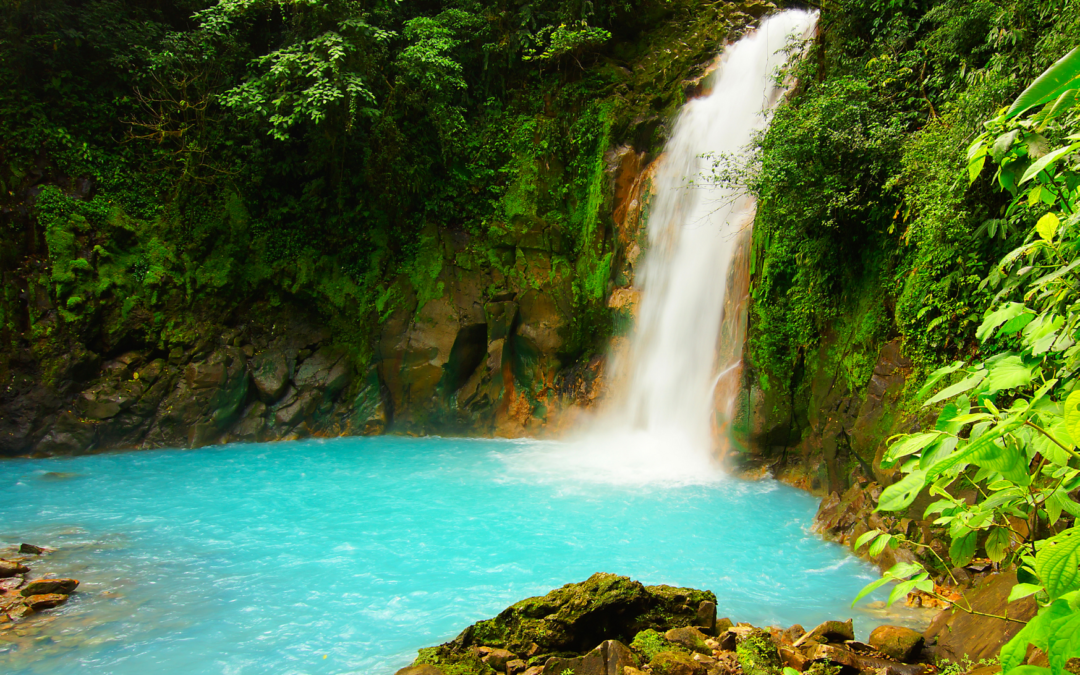Edited: June 2021
Costa Rican nature
Costa Rica is home to twenty-seven national parks, including UNESCO World Heritage sites. The parks protect the multitude of exotic flora and fauna that make the country such a desirable destination for exploration and adventure.
Some scientists and conservationists have even referred to this small Latin American country as a “living Eden.”
Visitors to Tamarindo are in luck, as a number of top destinations for wildlife and natural wonders are just a day trip away. One such place is the Rio Celeste, located in the Tenorio Volcano National Park.
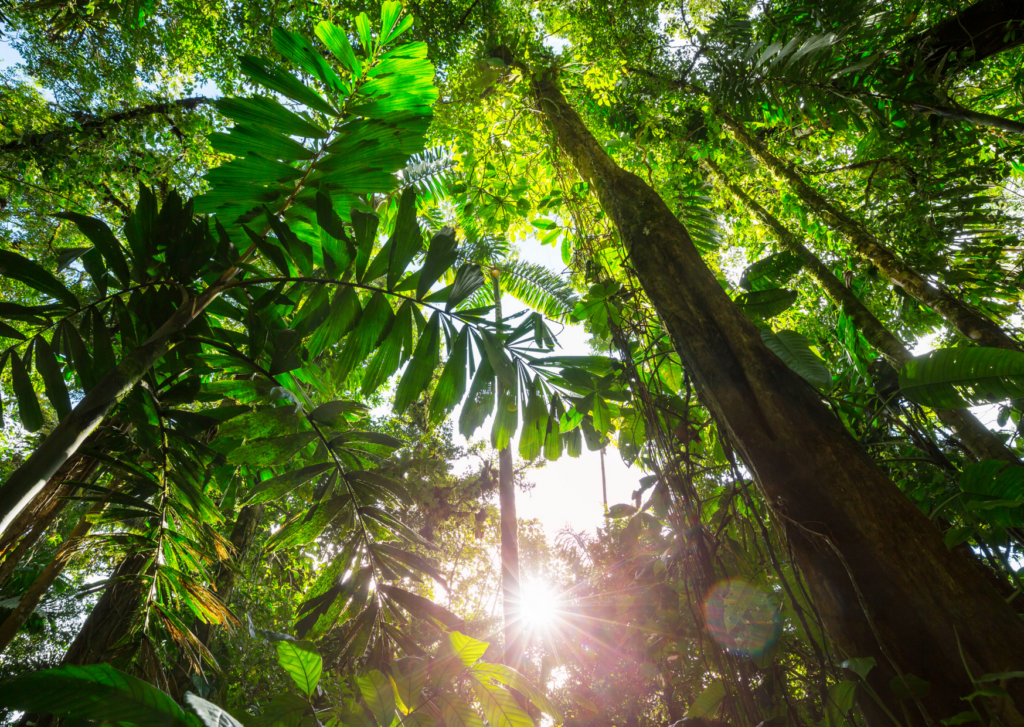
Rio Celeste
Rio Celeste is known for its unreal blue color. The color of the water is not actually blue, it just appears that way to us when the sunlight hits the water.
You can either book a tour that will take you to this gorgeous river, or rent a car. We don’t recommend taking the public transport to get here.
When driving to the National park, make sure to type in “Rio Celeste y Los Teñideros” in your GPS. Otherwise, you might end up on the wrong side of the National park.
The Rio Celeste Waterfall
Rio Celeste waterfall, a waterfall painted into the mountains of Costa Rica’s Guanacaste region.
The hue of blue that pools at the base of the fall are simply mesmerizing.
It’s silky, turquoise with hints of cerulean and white throughout. The rich blue color is highlighted against the lush green of the park’s tropical plants, and the cool gray of the stone’s face.
The pool’s surface is the epitome of tranquility but underneath lie strong currents that can be dangerous to swimmers.
No matter how inviting the pool looks, it’s best to hang inside the boundaries set by the park.
The waterfall is only a 2 km (1.2 miles) hike from the park’s entrance. If you’re short on time, or not in the mood for a big hike, you can just do the short hike to see the waterfall. Trust me, it’s worth it!
Laguna Azul (Blue Lagoon)
If you have the time or are in a hiking mood, make sure to check out the Laguna Azul (Blue Lagoon), and the Teñidores (dyers).
Laguna Azul is a natural pool with thick beds of green grass scattered throughout the shallower areas. It’s the perfect spot for a photo-op or quick dip to cool off.
You’re not allowed to swim in the Laguna but there’s an area where the water is clear making the perfect spot to stick your toes in or rinse the mud from your shoes.
Teñidores
Teñidores is the area where the two rivers meet, creating a nice contrast between the clear/brown hue of one river with the turquoise of the other. The spot represents the power and beauty held by mother nature.
Simply spectacular!
Rio celeste is only 2.5 hours from our Hotel! You can go solo, or we can help arrange a discounted tour for all hotel guests!
When coming to Costa Rica, this should definitely be on your list to see!
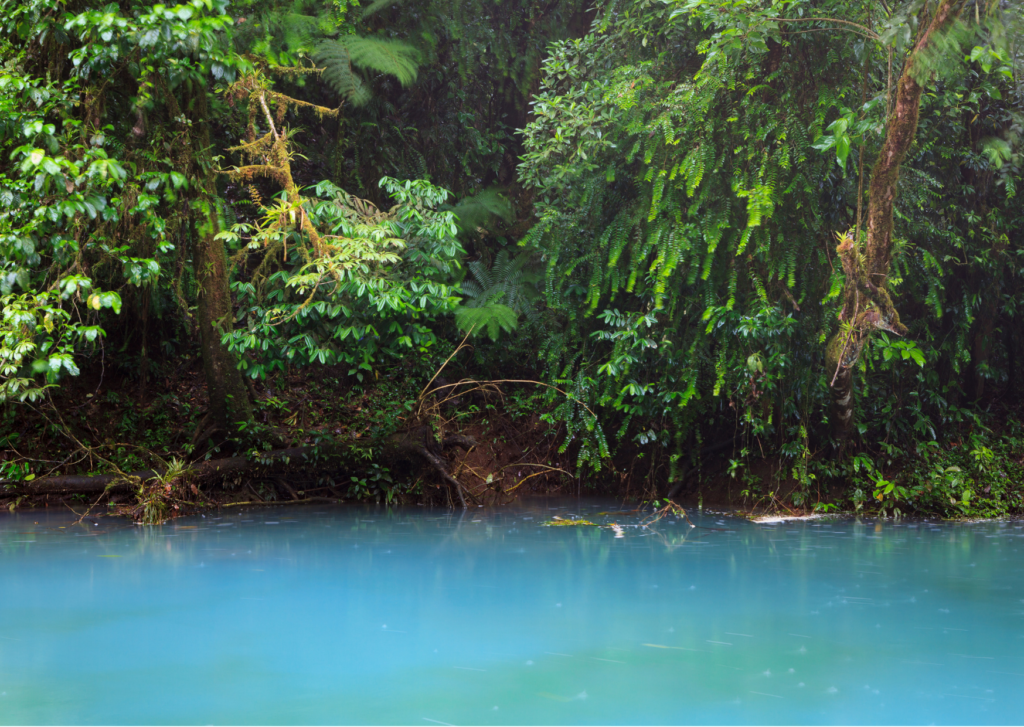
When to visit?
The best time to visit Rio Celeste is during the dry season (December to April/May). If you visit the river during the wet season the color of the river might be a bit of a disappointment since the lack of sunshine and rain makes the water more of a brown color.
What to bring?
Here are a few things to remember to bring when visiting:
- Sunscreen (if you visit during dry season).
- Waterproof hiking shoes are never a bad idea to bring to National parks in Costa Rica). You can also rent rubber boots at the National park (recommended during the wet season).
- Umbrella or something else to cover yourself and your valuables in case it starts to rain.
- Plenty of water (there are no toilets on the hiking path, only by the entrance).
- Mosquito spray.
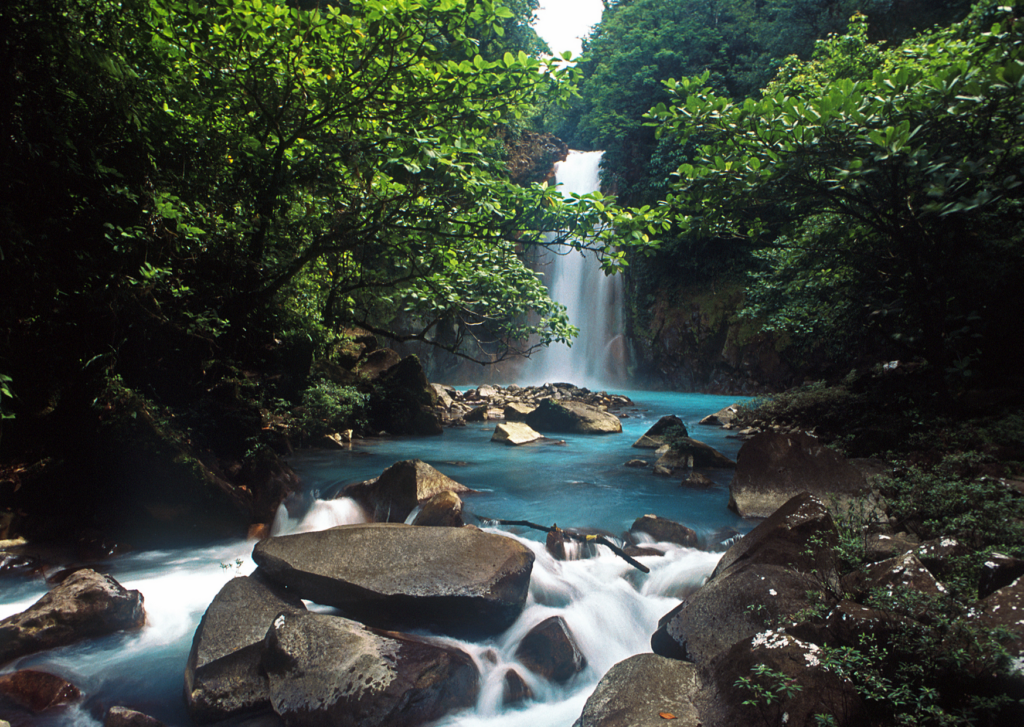
The hike through The Rio Celeste National Park
The journey through the National park is a muddy trek through micro-climates, that will surely prove that nature is pure magic.
The most notable destination of this adventure is the Rio Celeste waterfall, accessed by a ginger descent down 250 steps. It’s a somewhat difficult hike that pays in breathtaking views, along the path you will find a view point called “Mirador”, here you will have a good view over the river.
Those that choose to continue past the waterfall will be treated to the oasis of the blue lagoon. While swimming is prohibited, photos are encouraged! If you notice a bit of a peculiar smell, that’s just the sulphur emitted by the region’s volcanoes.
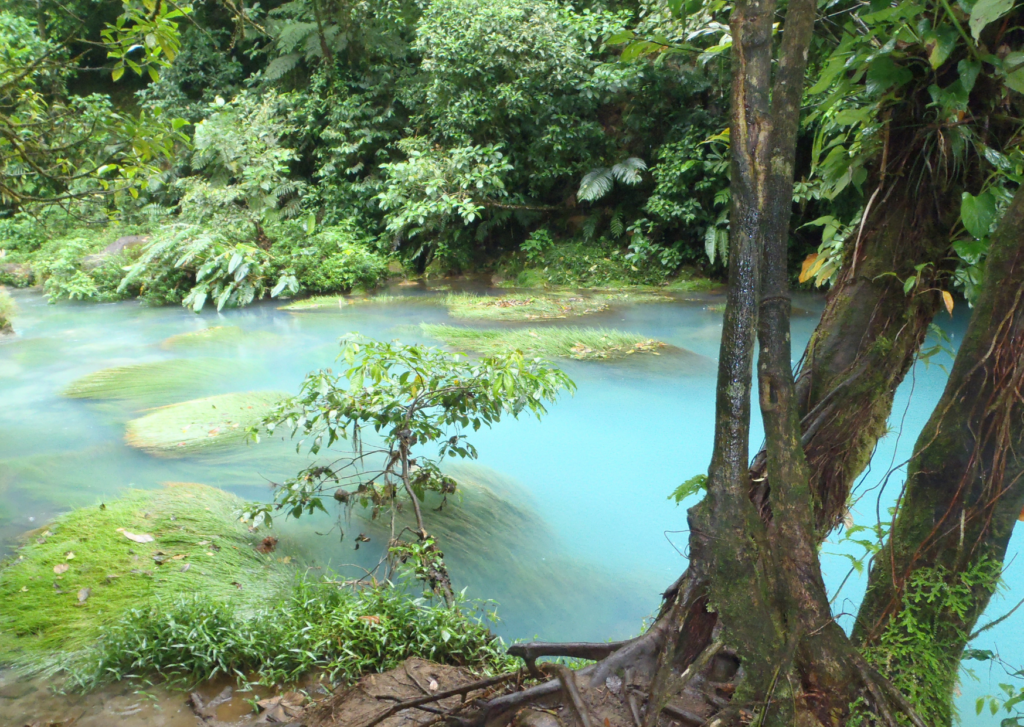
Once hikers reach the furthest point, they will be blown away by the optical phenomenon of El Teñidero. This coloration is formed by the convergence of two clear water rivers: Rio Buenavista and Quebrada.
It seems almost impossible for this occurrence not to be the result of some complex chemical reaction. In reality, a mineral known as aluminosilicate is suspended along the river and reflects the light from the sun to create this profound hue of blue.
Why visit Rio Celeste?
With this being said, a visit to the Rio Celeste is straight out of a traveler’s fairytale.
It may be a surreal moment for some travelers. Local legend has it that when God finished painting the sky, he dipped his brush into the Rio Celeste, blessing it with the rich shade of blue – see for yourself on your trip to Costa Rica!
Here are some items that might be useful for your trip to Rio Celeste:
Rubber boots (can be rented there if needed)
We may earn commissions from purchases made through the links on this page.

